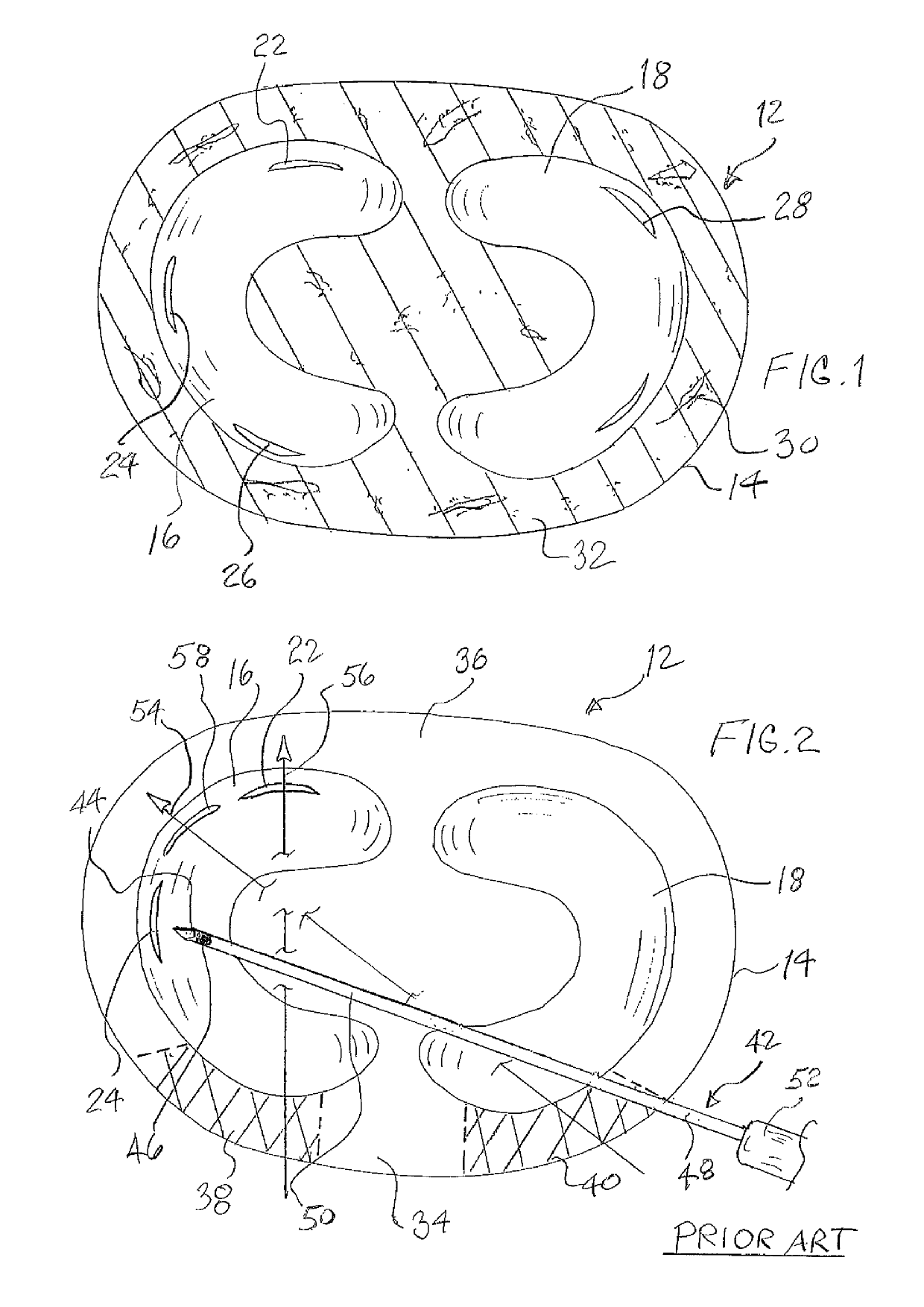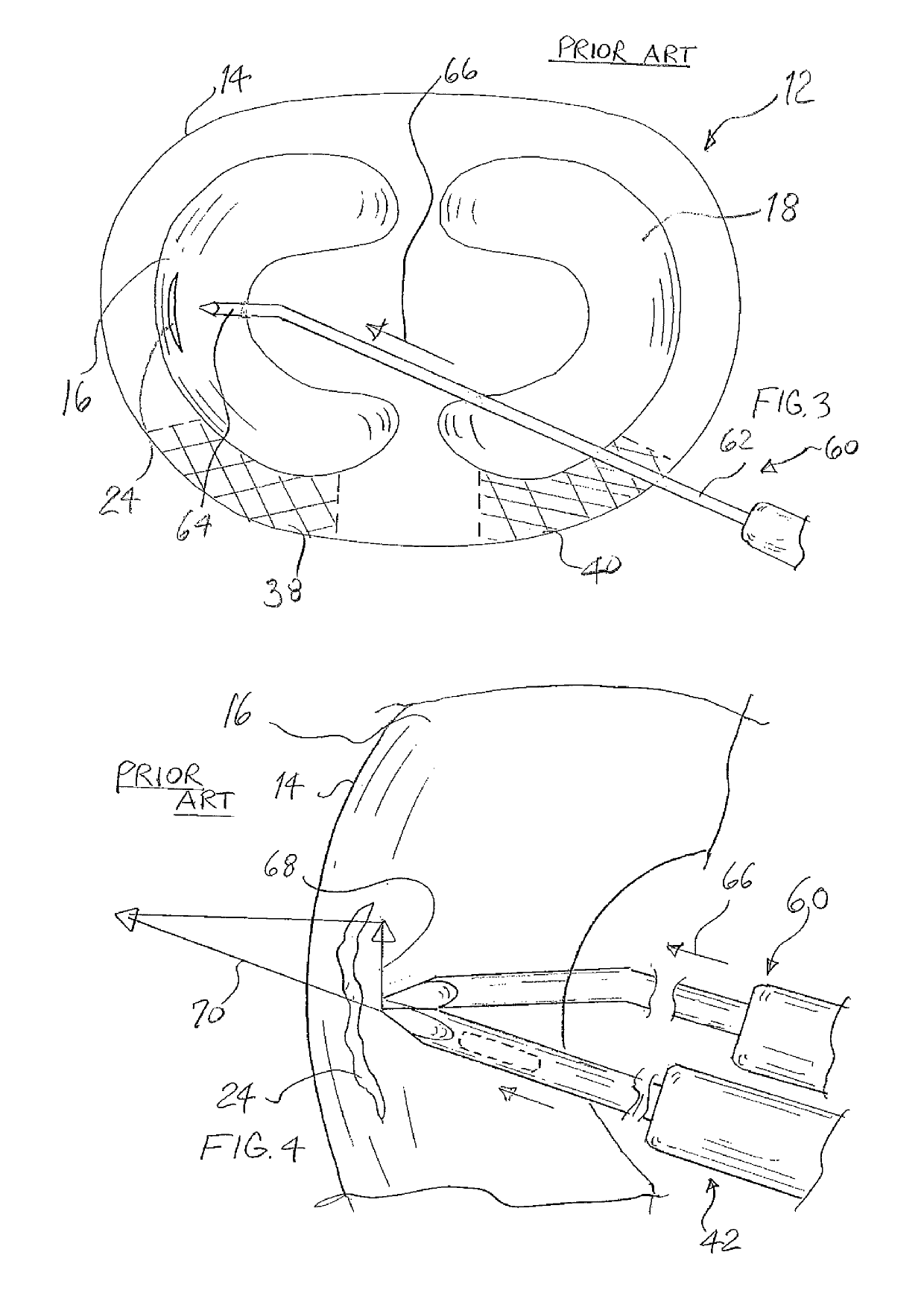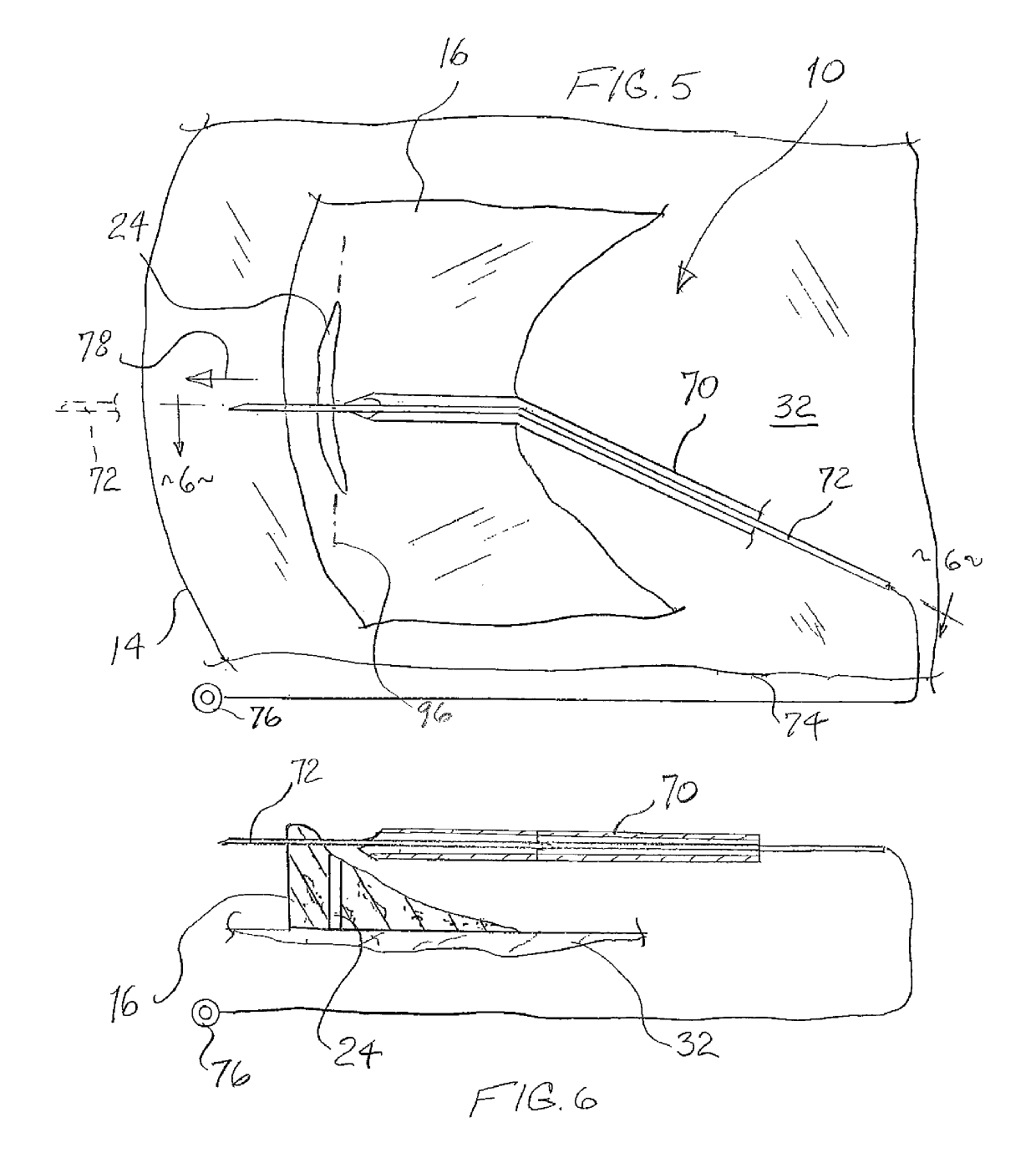Tissue repair system
a tissue repair and tissue technology, applied in the field of tissue repair systems, can solve the problems of reducing the repair efficiency of all-in-one technique, so as to eliminate the need for additional incisions
- Summary
- Abstract
- Description
- Claims
- Application Information
AI Technical Summary
Benefits of technology
Problems solved by technology
Method used
Image
Examples
Embodiment Construction
[0052]Various aspects of the present application will evolve from the following detailed description of the preferred embodiments thereof.
[0053]With respect to FIG. 1, it may be observed that a schematic view of a section of a human knee 12 is shown. Knee 12 includes a skin layer 14 and a pair of menisci 16 and 18. A plurality of representative meniscal tears 20 are also illustrated and are generally located in the peripheral third of each meniscus 16, 18. For example, meniscus 16 includes a posterior horn tear 22, a mid-body tear 24, and an anterior horn tear 26. Likewise, meniscus 18 exhibits a mid-body posterior tear 28 and an anterior mid-body tear 30. Again, the plurality of tears 20 exhibited in FIG. 1 are simply being employed as models for the following discussion of the novel apparatus of the present application. Portion 32 of knee 12 represents other anatomical structures within the knee such as bones, blood vessels, ligaments, and the like. Needless to say, knee 12 is rep...
PUM
 Login to View More
Login to View More Abstract
Description
Claims
Application Information
 Login to View More
Login to View More - R&D
- Intellectual Property
- Life Sciences
- Materials
- Tech Scout
- Unparalleled Data Quality
- Higher Quality Content
- 60% Fewer Hallucinations
Browse by: Latest US Patents, China's latest patents, Technical Efficacy Thesaurus, Application Domain, Technology Topic, Popular Technical Reports.
© 2025 PatSnap. All rights reserved.Legal|Privacy policy|Modern Slavery Act Transparency Statement|Sitemap|About US| Contact US: help@patsnap.com



